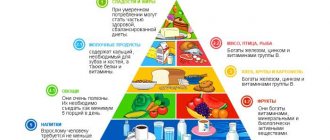Every person has positive and negative qualities that determine their character and attitude towards the world around them. The character of everyone is different, personal human qualities are important components, putting them together, you can see a psychological image. Personal qualities are divided into two groups:
- positive
- negative
No one can consist entirely of positive, best people, but they certainly must prevail. You can work better on yourself, eradicate the bad sides, improve the good traits in your character and behavior. Negative qualities often spoil life, the attitude of others, affect success, and provide a better position in society.
List of qualities
Personality structure includes temperament, volitional qualities, abilities, character, emotions, social attitudes and motivation. And also separately the following qualities:
- Independence;
- Intellectual self-improvement;
- Communication skills;
- Kindness;
- Hard work;
- Honesty;
- Determination;
- Responsibility;
- Respect;
- Confidence;
- Discipline;
- Humanity;
- Mercy;
- Curiosity;
- Objectivity.
A person’s personal qualities consist of internal perception and external manifestations. External manifestation includes a list of indicators:
- innate or acquired artistry;
- attractive appearance and sense of style;
- oratory skills and clear pronunciation of speech;
- a competent and sophisticated approach to non-verbal communication.
The main qualities of a person (her inner world) can be classified according to a number of characteristics:
- a comprehensive assessment of the situation and the absence of conflicting perceptions of information;
- an inherent love for people;
- open-minded thinking;
- positive form of perception;
- wise judgment.
The level of these indicators determines the individual characteristics of the individual being studied.
List of positive personality traits of a person starting with the letters A, B, C: description, adjectives, words
The letter a:
- Authoritative – inspiring respect, distinguished from others by representativeness, greatness, status.
- Aristocratic is a person who has a lot of refined and cultural qualities that seem to elevate him above other people.
- Artistic – a person with extraordinary creative abilities.
- Angelic is a person whose all qualities are so positive and positive that he can only be compared to an angel.
- Active - a person who does not like to sit in one place and is always in the thick of things.
- Neat - a person distinguished by special positive qualities, diligent and clean.
- Appetizing - a person who is quite well-fed, but not overweight, who evokes tenderness and sympathy, as well as sexual desire.
- Athletic – a person with a beautiful and toned figure, who is athletically trained.
- Atypical - a person who is not like everyone else, he is unusual, extraordinary
- Avant-garde is a person with an original style of thinking and unusual appearance.
Letter B:
- Impeccable – ideal, possessing qualities that distinguish a person from others
- Selfless - a very kind person who is able to help others without demanding anything in return
- Catchy - a person who has a pleasant and bright appearance that attracts and makes him stand out from the crowd
- Carefree - a person whose thoughts are carefree
- Peerless - a person who is not like any other
- Exciting - a person who makes you think about yourself, exciting your thoughts and body
- Priceless - a person who has enormous value that is so high that it cannot be determined
- Blessed is a person who brings joy and happiness.
- Prosperous - a person with exceptional abilities, very kind and positive
- Blessed is a very happy person
- Brilliant - a person whose actions and deeds are very good and are always a level different from the rest
- Lively - a person with a bright and violent character
- Brilliant - a person who is constantly distinguished by something: character, good deeds, appearance
- Cheerful - a very active, agile person who is always in the center of events
- Divine - a person whose deeds, appearance or actions are compared to God
- Experienced - a person with experience and a “baggage” of certain knowledge
Letter B:
- Polite - a well-mannered and kind person who knows how to speak correctly and act well with others
- A great person is a person whose actions and deeds deserve respect.
- Cheerful – a positive person, a person with a sense of humor
- Generous - a very kind person who knows how to forgive
- Attentive - a person who is sensitive to people and important life events
- Inspirational - a person who is permeated by inspiration, he is very sensual
- Loyal – a person who is devoted to someone or something
- Airy - a person with whom it is easy to communicate, he is never annoying
- Omnipresent - a person who knows everything and tries to go everywhere
- Prominent - a person who cannot be ignored or his abilities cannot be ignored
- Magnificent - one who has special abilities incomparable to others
- Exciting – a person who excites and evokes sexual fantasies
- Magical - one whose merits are so good that they seem unreal
- Impressive - the deeds or appearance of such a person leave an impression
- Inflammatory - a person whose appearance or actions leave a warm and positive impression
- Free - a person with free thoughts or behavior
- Almighty - a person who can do anything
Positive human qualities
Structure of individual qualities
To more accurately determine the quality of a person’s personality, one should highlight its biological structure. It consists of 4 levels:
- Temperament, which includes characteristics of genetic predisposition (nervous system).
- The degree of unique mental processes that allows one to determine a person's personal qualities. The level of individual perception, imagination, manifestation of volitional signs, feelings and attention influences the achievement of results.
- The experiences of people, characterized by knowledge, abilities, capabilities and habits.
- Indicators of social orientation, including the subject’s attitude to the external environment. The development of personal qualities acts as a guiding and regulating factor of behavior - interests and views, beliefs and attitudes (state of consciousness based on previous experience, regulating the attitude and behavior of people), moral norms.
The above categories are closely related to the needs and character, abilities and egocentrism of people. The set of general indicators influences the creation of an individual personality shell.
Talent
It is on talent that all strong character traits are based. Every person knows perfectly well what he can do best. Developing talent will take effort. Few achieve perfection, but anyone can hone their skills.
To ensure that talent does not go to waste, it is best to associate your profession with it. Life will be much more interesting if work brings pleasure. To do this, it is simply necessary that it suits the person’s character, temperament, and meets his interests.
Traits of people that characterize their temperament
The innate qualities of a person shape him as a social being. Behavioral factors, type of activity and social circle are taken into account. The category is divided into 4 concepts: sanguine, melancholic, choleric and phlegmatic.
- A sanguine person is a strong and balanced person who easily adapts to a new environment and overcomes obstacles. Sociability, responsiveness, openness, cheerfulness and leadership are the main personality traits.
- A melancholic person is a weak and sedentary person. Under the influence of strong stimuli, behavioral disturbances occur, manifested by a passive attitude towards any activity. Isolation, pessimism, anxiety, tendency to reason and resentment are characteristic features of melancholic people.
- Cholerics are strong, unbalanced, energetic personality traits. They are quick-tempered and unrestrained. Touchiness, impulsiveness, emotionality and instability are clear indicators of a restless temperament.
- A phlegmatic person is a balanced, inert and slow person, not prone to change. Personal indicators show how to easily overcome negative factors. Reliability, goodwill, peacefulness and prudence are the hallmarks of calm people.
Moral properties of personality
At the genetic level, moral programs inherent in distant ancestors are laid in a person. These properties are adjusted by life under the influence of such factors:
- family education;
- the influence of the school and the yard company;
- social and personal relations;
- life experience.
Each aspect is subject to certain rules of moral behavior. They form the individual’s attitude towards himself and other people. Based on what values were embedded in the inner world, moral qualities are divided into categories: humanistic, nationalistic, racial, religious-fanatical.
Morality is established in childhood
Only the first category refers to positive characteristics. It is based on respect for all people, regardless of their religion, nationality and race.
Individual character traits
Character is a set of individual traits that manifest themselves in different types of activity, communication and relationships with people. The development of personal qualities is formed against the background of life processes and the type of activity of people. To more accurately assess the character of people, behavioral factors in specific circumstances should be studied in detail.
Types of character:
- cycloid – mood swings;
- hyperthymic accentuation consists of high activity and failure to complete tasks;
- asthenic – capricious and depressive personal qualities;
- sensitive – timid personality;
- hysterical - the makings of leadership and vanity;
- dysthymic – focused on the negative side of current events.
List of characteristics associated with an individual
There is a grouping of certain signs that make it possible to recognize a person, namely:
- a subject who is aware of the totality of his inherent social features;
- a person participating in the socio-cultural life of society;
- a person who has individual characteristics that are manifested in social relationships through communication and work activity;
- the individual is clearly aware of his uniqueness and significance in the social world.
The concept of personality implies that the subject has a clearly expressed own opinion in relation to what is happening around him, that is, there is a worldview. An individual always asks philosophical questions about life, about its own significance in this world. In other words, there are ideas, views and life values that shape a given person.
Individual abilities of people
Individual psychological qualities of a person contribute to the achievement of success and excellence in a certain activity. They are determined by the social and historical practice of the individual, the results of the interactions of biological and mental indicators.
There are different levels of ability:
- giftedness;
- talent;
- genius.
The development of the algorithm of personal qualities and abilities of people is characterized by the ability to learn new things in the mental sphere. Special features are manifested in a specific type of activity (musical, artistic, pedagogical, etc.).
Weaknesses in a resume
When writing your resume, be careful when indicating the reason for leaving your previous job. For example, if there were conflict situations with employees, or disagreements with the employer. It doesn't matter why you quit. Do not write about the reasons for leaving; it is better to write about it discreetly. For example, you weren’t happy with your work schedule, or you had to change your position due to a move.
Also, try not to get personal and tell your future employer about your past work team. It is better to avoid inconvenient topics tactfully and carefully. At the same time, without losing composure and self-esteem.
Strong-willed traits of people
Adjusting behavioral factors associated with overcoming internal and external discomfort makes it possible to determine personal qualities: the level of effort and plans for taking actions, concentration in a given direction. Will manifests itself in the following properties:
- willpower - the level of effort to achieve the desired result;
- perseverance – the ability to mobilize to overcome troubles;
- endurance - the ability to limit feelings, thinking and actions.
Courage, self-control, commitment are the personal qualities of strong-willed people. They are classified into simple and complex acts. In a simple case, incentives to action flow into execution automatically. Complex acts are carried out on the basis of motivation, drawing up a plan and taking into account the consequences.
Objective assessment
My strengths, what are they? On the one hand, the question is not difficult, but many cannot accurately describe themselves. Assessing your capabilities is an important point. If personal growth and self-improvement are important to you, you should not neglect it.
By making a list of your strengths, you can understand what you lack for career growth, and therefore begin the path to eliminating gaps in knowledge and opportunities.
How to write a term paper on speech therapy
07.09.2010 244801
These guidelines are compiled to help students gain an understanding of the content and structure of coursework in speech therapy.
Logopedia of pedagogical science that studies anomalies of speech development with normal hearing, explores the manifestations, nature and mechanisms of speech disorders, develops the scientific basis for overcoming and preventing them means of special training and education.
The subject of speech therapy as a science is speech disorders and the process of training and education of persons with speech disorders.
The object of study is a person suffering from a speech disorder.
The main task of speech therapy as a science is the study, prevention and elimination of various types of speech disorders.
Coursework in speech therapy is a student's scientific and experimental research. This type of educational activity, provided for by the educational and professional program and curriculum, contributes to the acquisition of skills in working with literature, analyzing and summarizing literary sources in order to determine the range of insufficiently studied problems, determining the content and methods of experimental research, processing skills and qualitative analysis of the results obtained. The need to complete coursework in speech therapy is due to the updating of knowledge concerning the content, organization, principles, methods and techniques of speech therapy work.
As a rule, during their studies, students must write two term papers - theoretical and practical.
The first course work should be devoted to the analysis and synthesis of general and specialized literature on the chosen topic. Based on this analysis, it is necessary to justify and develop a method of ascertaining (diagnostic) experiment.
In the second course work, it is necessary to provide an analysis of the results obtained during the ascertaining experiment, as well as determine the directions and content of speech therapy work, and select adequate methods and techniques of correction.
So, let’s present the general requirements for the content and design of coursework in speech therapy.
The initial and most important stage of working on a course project is the choice of a topic, which is either proposed by the supervisor or chosen by the student independently from a list of topics that are consistent with the areas of scientific research of the department.
Each topic can be modified, considered in different aspects, but taking into account a theoretical and practical approach. Having chosen a topic, the student needs to think through in detail its specific content, areas of work, practical material, etc., which should be reflected both in the formulation of the topic and in the further construction of the study. It should be recalled that the chosen topic may not only have a purely theoretical orientation, for example: “Dysarthria. Characteristics of the defect”, “Classification of dysgraphia”, but also take into account the practical significance of the problem under consideration, for example: “Speech therapy work on speech correction for dysarthria”. It should also be taken into account that when formulating a topic, excessive detail should be avoided, for example: “Formation of prosodic components of speech in preschoolers of the sixth year of life attending a preschool institution for children with severe speech impairments.”
The course work includes such mandatory parts as: introduction, three chapters, conclusion, bibliography and appendix.
The text of the term paper begins with the title page . An example of its design can be seen here.
Then the content of the work is given, in which the names of chapters, paragraphs, and sections are formulated in strict accordance with the content of the thesis. An example of its design can be seen here.
In the text, each subsequent chapter and paragraph begins on a new page. At the end of each chapter, the materials are summarized and conclusions are formulated.
The introduction reveals the relevance of the problem under consideration in general and the topic being studied in particular; the problem, subject, object, and purpose of the study are defined. In accordance with the goal and hypothesis, objectives and a set of research methods aimed at achieving the objectives must be defined.
The relevance of the topic lies in reflecting the current level of pedagogical science and practice, meeting the requirements of novelty and usefulness.
When defining the research problem, it is important to indicate what practical tasks it will help to implement in training and educating people with speech pathology.
The object of research is understood as certain aspects of pedagogical reality, perceived through a system of theoretical and practical knowledge. The ultimate goal of any research is to improve this object.
The subject of research is some part, property, element of an object, i.e. the subject of research always indicates a specific aspect of the object that is to be studied and about which the researcher wants to gain new knowledge. An object is a part of an object.
You can give an example of the formulation of the object, subject and problem of research:
– The object of the study is the speech activity of preschool children with phonetic-phonemic speech disorders.
– The subject of the study is the features of intonation speech of children with phonetic-phonemic speech disorders.
– The research problem is to determine effective directions for speech therapy work on the formation of intonation expressiveness of speech in the system of correctional intervention.
The purpose of the study contributes to the specification of the object being studied. The goal of any research is to solve a specific problem. The goal is specified in tasks taking into account the subject of research.
The research objectives are formulated in a certain sequence, which determines the logic of the research. The research objectives are set on the basis of a theoretical analysis of the problem and an assessment of the state of its solution in practice.
The first chapter is an analysis of literary sources, which examines the state of this problem in historical and modern aspects, and presents the most important theoretical principles that formed the basis of the study.
When writing the first chapter, you should pay attention to the fact that the text of the course work must be written in a scientific style. When presenting scientific material, it is necessary to comply with the following requirements:
– Specificity – a review of only those sources that are necessary to disclose only a given topic or solve only a given problem;
– Clarity – which is characterized by semantic coherence and integrity of individual parts of the text;
– Logicality – which provides for a certain structure of presentation of the material;
– Reasoning – evidence of thoughts (why this and not otherwise);
– Precision of wording, excluding ambiguous interpretation of the authors’ statements.
A literary review of the state of the problem being studied should not be reduced to a consistent presentation of literary sources. It should present a generalized description of the literature: highlight the main directions (currents, concepts, points of view), analyze in detail and evaluate the most fundamental works of representatives of these directions.
When writing a work, the student must correctly use literary materials, make references to the authors and sources from which the results of scientific research are borrowed. Failure to provide required references will reduce your coursework grade.
As a rule, in coursework on speech therapy, references to literary sources are formatted as follows: the number of the cited source in the general list of references is placed in square brackets. For example: General speech underdevelopment is a speech pathology in which there is a persistent lag in the formation of all components of the language system: phonetics, vocabulary and grammar [17].
When using quotations, in square brackets, in addition to indicating the source number, the page number from which this excerpt is taken is indicated, for example: Speech rhythm is based on a physiological and intellectual basis, since, firstly, it is directly related to the rhythm of breathing. Secondly, being an element that performs a communicative function, “correlates with meaning, i.e. controlled intellectually” [23, P.40].
However, course work should not be of a purely abstract nature, so you should not abuse the unreasonable abundance of citations. Quoting should be logically justified, convincing and used only when really necessary.
In the second chapter , devoted to experimental research, the organization should be described and the program of the ascertaining experiment should be presented. The survey methodology, as a rule, consists of a description of several series of tasks, with detailed instructions, visual and lexical material, the procedure for completing tasks by experiment participants, and scoring criteria. This chapter also provides a qualitative and quantitative analysis of the results obtained.
When analyzing the results of an experiment, it is necessary to use a scoring system. Examples of various criteria for quantitative and qualitative assessment are presented in the following works:
– Glukhov V.P. Formation of coherent speech in preschool children with general speech underdevelopment. - M.: Arkti, 2002. - 144 p.
– Fotekova T.A. Test methodology for diagnosing oral speech of primary schoolchildren. - M.: Arkti, 2000. - 56 p.
– Levchenko I.Yu. Pathopsychology: Theory and practice. - M.: Academy, 2000. - 232 p.
In order to visually present the results obtained during the experimental study, it is recommended to use tables, graphs, diagrams, etc. Histograms can be used in a variety of ways - columnar, cylindrical, planar, volumetric, etc. An example of the design of tables, figures, and histograms can be found here.
The third chapter provides a rationale for the proposed methods and techniques and reveals the content of the main stages of correctional work.
The conclusion contains a summary of the material presented and the main conclusions formulated by the author.
The bibliography must contain at least 25 sources. The list includes bibliographic information about the sources used in preparing the work. An example of its design can be seen here.
In the application you can present bulky tables or illustrations, examination protocols, observation records, products of activity (drawings, written works of children), notes from speech therapy classes, etc.
The volume of one course work must be at least 30 pages of typewritten text.
In general, coursework in speech therapy is the basis for a future thesis, in which the study of the begun problem can be continued, but from the standpoint of a different approach or a comparative analysis of the disorders being studied in different age categories of people with different types of speech disorders.
The content and format of theses in speech therapy can be found here.
Literature:
1. How to write a term paper on speech therapy: Methodological recommendations. Educational and methodological manual / Comp. Artemova E.E., Tishina L.A. / Ed. Orlova O.S. – M.: MGOPU, 2008. – 35 p.
2. Research work of students in the system of higher professional pedagogical education (specialty 031800 - Speech therapy). Methodological recommendations for completing the thesis / Compiled by. L.V. Lopatina, V.I. Lipakova, G.G. Golubeva. - St. Petersburg: Publishing house of the Russian State Pedagogical University named after. A. I. Herzen, 2002. - 140 p.
What's better to hide
It is better not to display such aspects of character as greed, selfishness, rudeness and any other qualities that are related to undesirable factors. For example, you should not indicate weaknesses in the position of an engineer such as inattention or absent-mindedness. An engineer must be as focused and attentive as possible; these are the basic conditions.
Non-standard listing of qualities
You can communicate your willingness to do a lot to get a specific job, but not indicate your willingness to do everything. The manager must see that the person wants to develop and learn for the sake of the position. But in no case should he see the ability to deceive, evade others.











